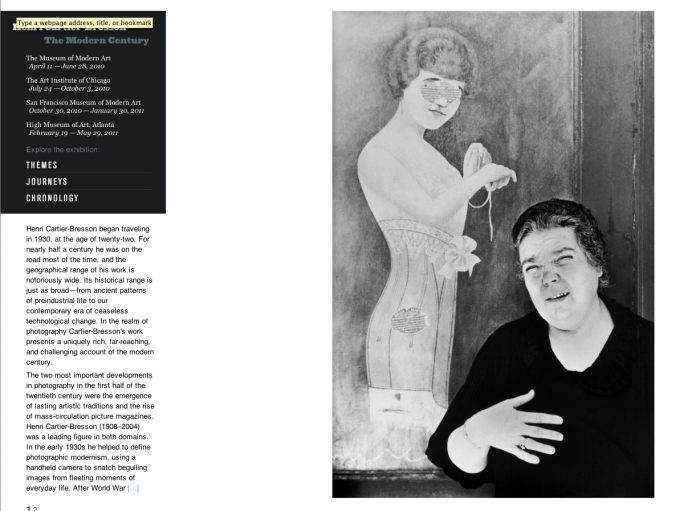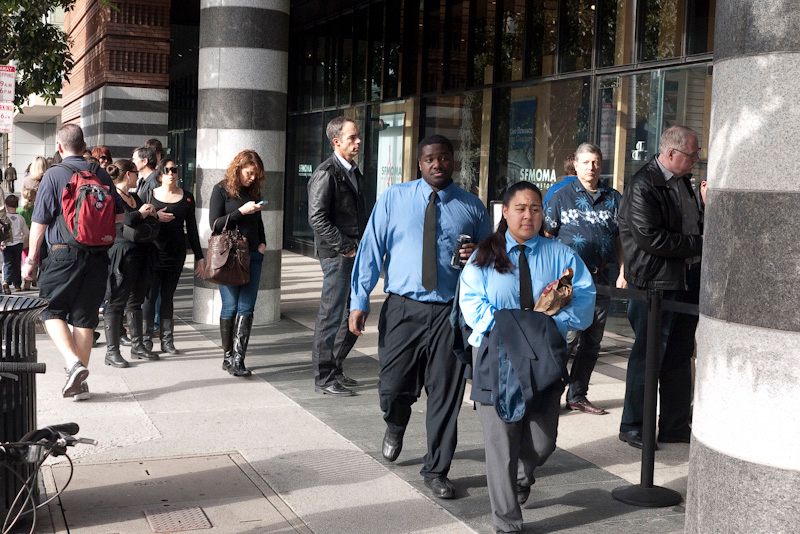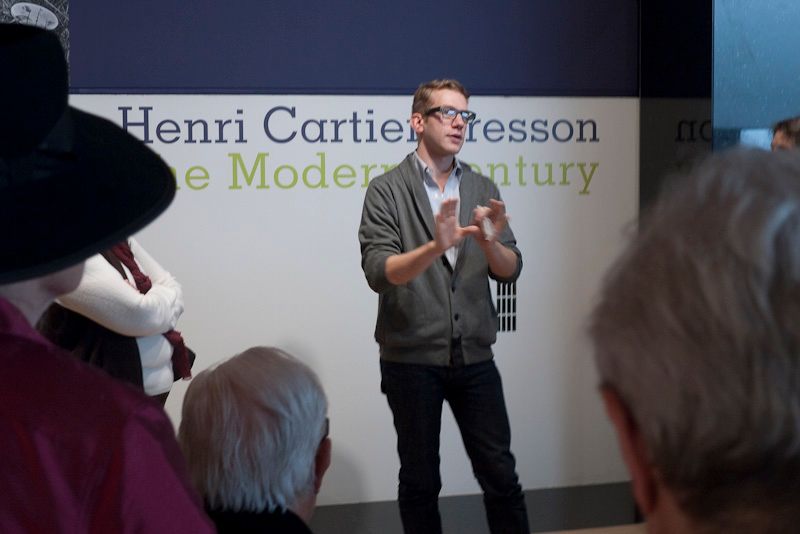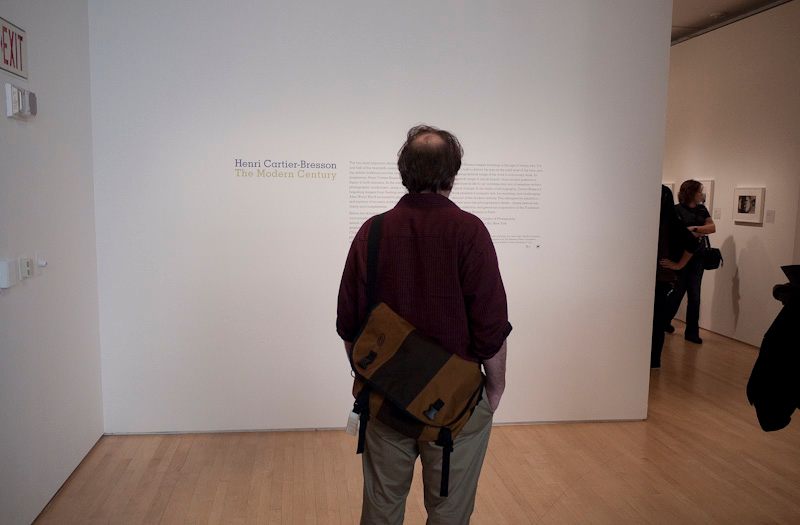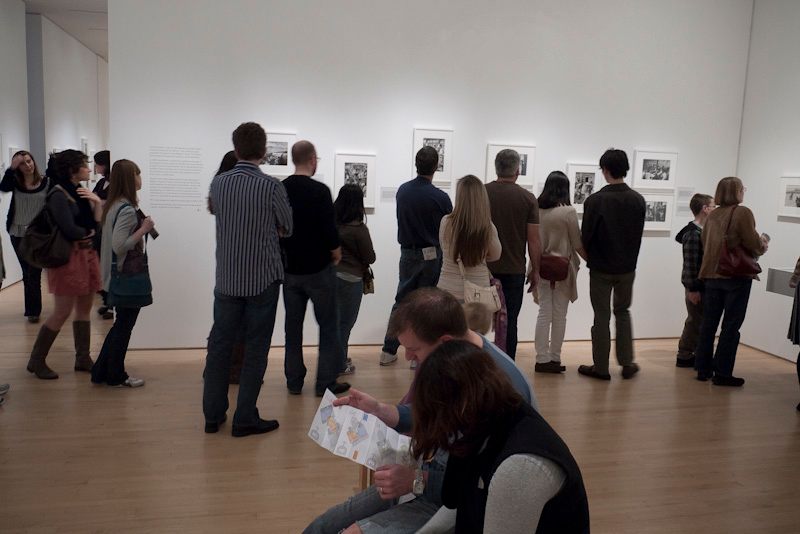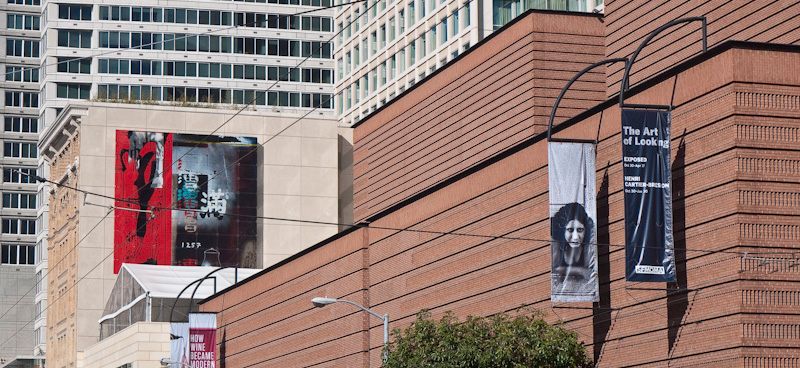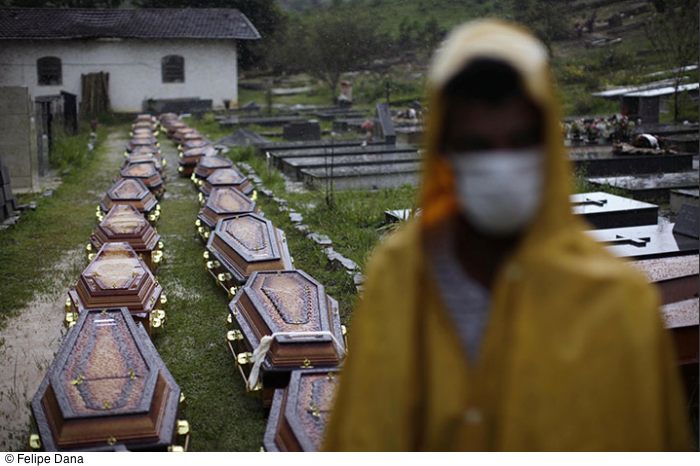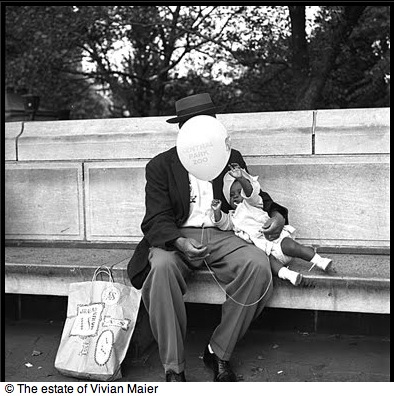A New York street snapper.
A friend of the blog pointed me to a Helen Levitt show at the Cantor Arts Center at Stanford University in Palo Alto and I finally manage to toddle along. The show, named “In a New York Minute”, is worth attending if you can make it; unlike the overblown Cartier-Bresson one earlier this month at SF MOMA, this one has relatively few pictures on display and leaves you wanting more. That’s how it should be done. Plus you can see a great collection of Rodin sculptures and tour the Stanford campus while you are there.
The distinguishing feature of Levitt’s work is that it is never less than witty. Often it’s laugh-out-loud funny. You could never accuse HCB’s output of that.
You can read Levitt’s biography here. The theft of many of her color originals from her home only further emphasizes the need for every photographer to have multiple back-ups – there is no excuse in a digital age not to, using technology not available to Levitt.
Though there’s a paperback of Levitt’s work available for browsing in the gallery, their bookshop only has a very costly $60 hardback of her work. Duh! I asked the salesperson and she didn’t even know there was a paperback ….
No matter. Do the smart thing and order the same hardback from Amazon for much less. It’s beautifully printed and an essential addition to any street photography fan’s book library. I just ordered one of the last ones, so you may have to wait! But a search of remaindered booksellers will get you there for a like price.
Levitt’s work often features children and many of the images in the show are in color, which only adds to their impact. Color is another thing largely missing from HCB’s work which, if you have seen his color snaps, is just as well.
Here’s a typical Levitt photo, full of wit and whimsy:
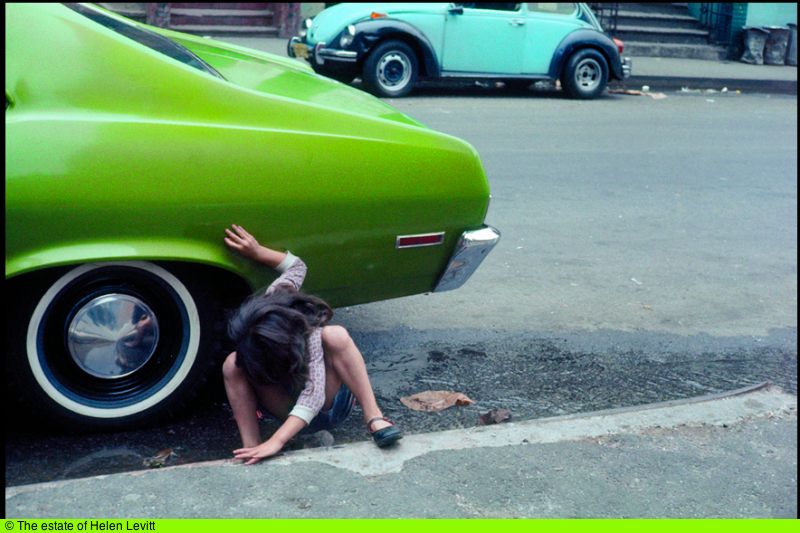
The show is not lacking in humor either. There are but two props, visible in the following snaps, which I took once the ever watchful guard’s back was turned. (Excuse me, but why exactly are they ‘guarding’ machine made prints?) If you want to get a camera in there, don’t take a backpack as they make you check those. My shoulder bag, Panny G1 and all, survived the strip search ….
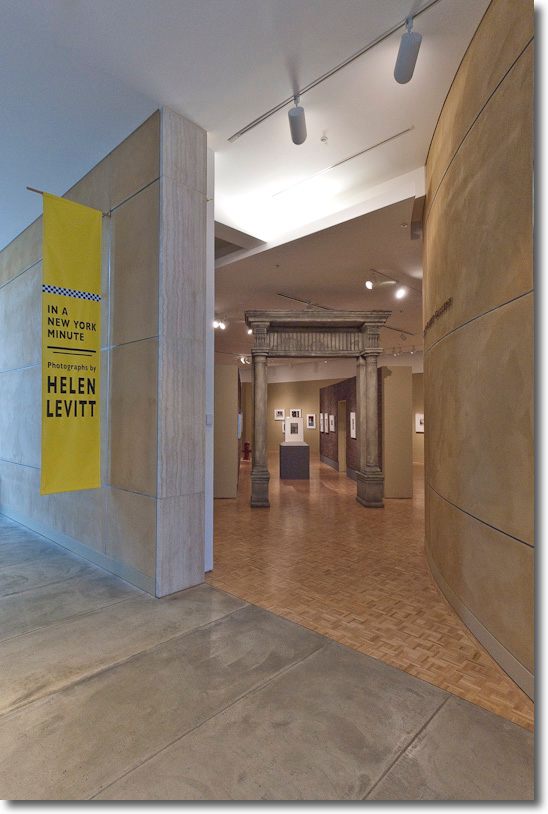
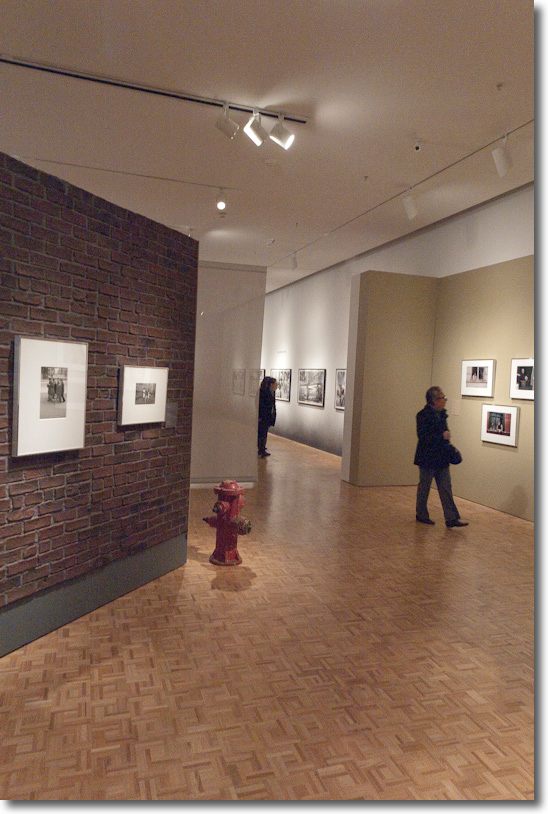
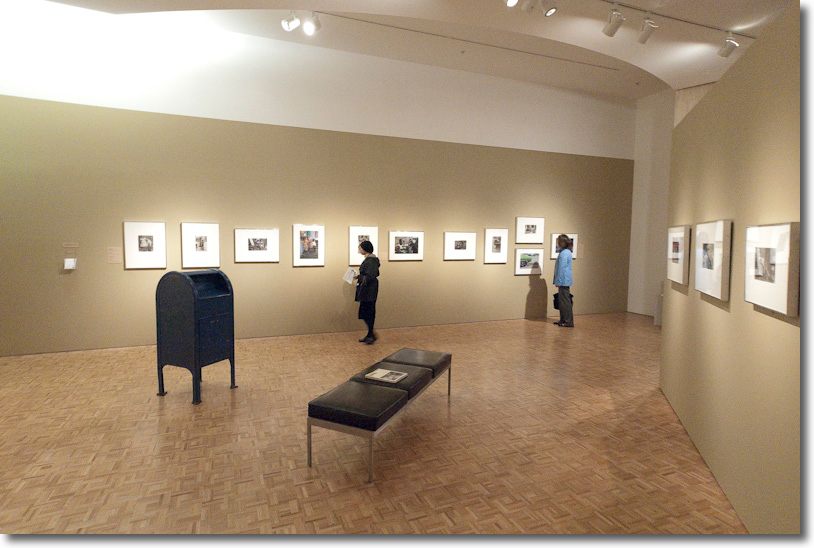
All snaps on the Panasonic G1 with the Olympus 9-18mm MFT superwide zoom at 9mm and at ISO 1600. In truth, that’s really pushing the poor little sensor in the G1 which starts emitting creaking sounds at anything much over ISO 400, but it works at a pinch when the light is really low. Levitt – and HCB – would have loved it!
